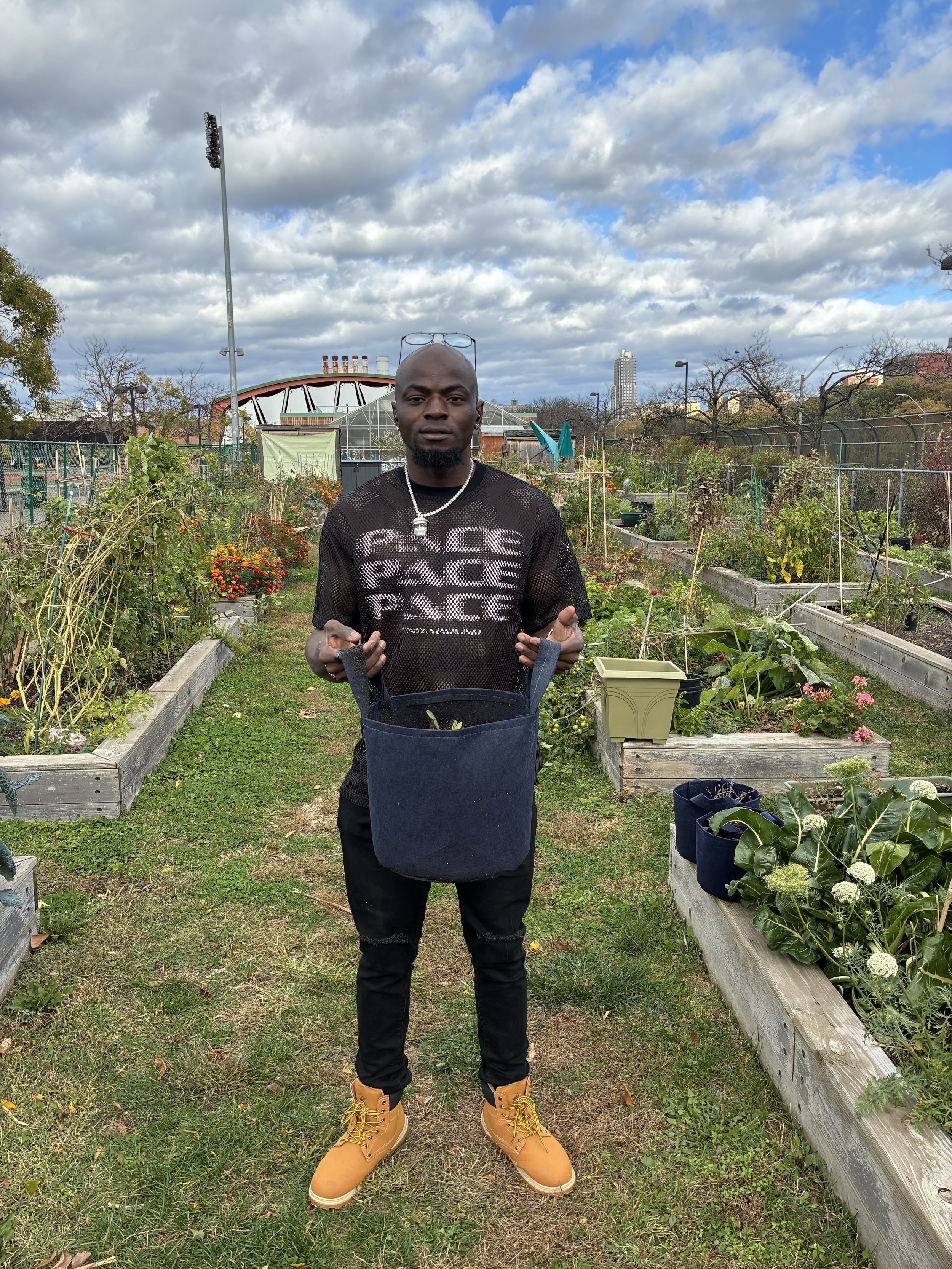Gay Asylum Seeker Homeless in NYC: Why the "Safe Haven" Isn't Safe Enough
On a bright afternoon at Riverbank State Park, Creflo reflects on a question many of us take for granted: What gives you hope?
"I've just been hopeful," he says. "Hopeful that someday I'll get a better life in America. At least I'm free to be myself. My sexuality—I no longer think of being harassed or excommunicated. I’m free in that aspect."
But freedom, Creflo has learned, comes with a price.
The Dream of a Safe Haven
Back in Nigeria, Creflo had a good life. He dressed well, pursued a second degree, and worked with groups that provided housing and crisis support for LGBTQ+ people. He believed America would be a true safe haven—a place to live freely and without fear.
"I left everything," he says quietly.
Creflo Gardening at Riverbank State Park
The Reality of Arrival
Creflo’s journey began in Washington, DC, before he moved to New York. A friend housed him for four days. Then he was homeless.
Desperate, he reached out to seven or eight organizations across states. Only a few replied. Most said they couldn’t help. "Back home, they said America is a safe haven for LGBTQI+ people," he says, his voice breaking. "Coming here, this is what I’m facing. Is this how the safe haven is supposed to be?"
When Safe Spaces Aren’t Safe
An LGBTQ+ organization in Boston finally offered him housing—until it didn’t. After what he describes as breaking a rule, shaped by trauma, they asked him to leave.
"At that moment, what was going through my head was, leave to where?" he remembers. He even considered returning to Nigeria, back to danger.
He stayed, moving from couch to couch. One man who offered him a place demanded sex in exchange. When he refused, Creflo ended up in a men’s shelter—a place he could hardly bear to use the bathroom in. He lasted three days.
Surviving Day to Day
Now Creflo has temporary shelter through a government program, but survival is still a struggle.
He relies on a prepaid phone to look for work and stay connected, but when we spoke, he was about to lose service. He missed his first biometric appointment for asylum—terrified it would delay his case for months—but got a new date within two weeks. He borrowed money to travel to Boston.
Even navigating the subway is hard. "The trains are the only thing I can afford," he says. "But I’m learning."
What Gives Him Hope
Despite everything, Creflo keeps going. He reaches out online, builds connections, and dreams of joining a support group. "It would help me navigate this new country," he says. "It will help me get a stand—and bring out my best potential to help others."
He knows what newcomers will need—not just housing, but understanding. Not just rules, but grace. Not just a bed, but genuine support from people who see them as human beings, not problems.
"It’s really hard to survive on a day when you don’t have money," he admits. "But I’m surviving. It’s not been easy, but I’m surviving."
And he’s still hopeful. "I just want to ride this stuff. I just want to ride."
How You Can Help
Creflo’s story isn’t unique. Every day, LGBTQ+ asylum seekers arrive in New York fleeing violence, only to find the “safe haven” they dreamed of is out of reach.
They need more than housing. They need people. Someone to help with the subway. Someone to explain how things work. Someone to remind them they’re not alone.
Refuge America is building that network of LGBTQ+ and allied volunteers walking alongside newcomers like Creflo. No special skills required—just your time, patience, and humanity.
Sign up to join a support team. Help someone find their footing. Be the welcome that Creflo and so many others are still waiting for.
Names and details shared with permission. Creflo continues his asylum process and remains hopeful about building a life in New York City.

